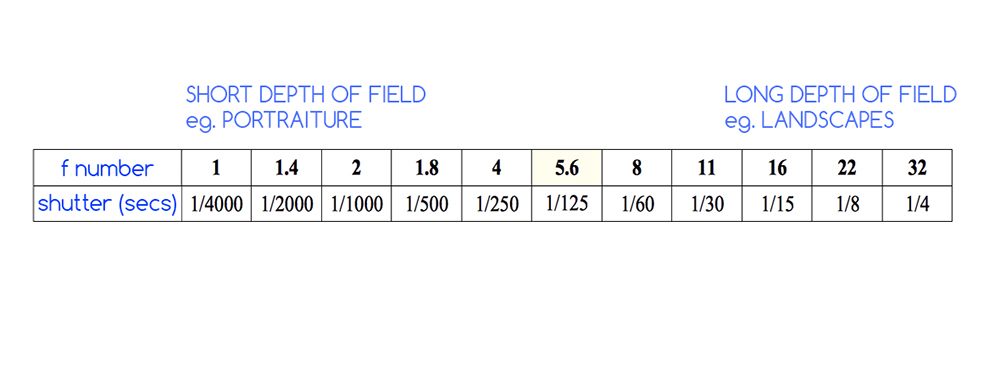Whilst light-meters, digital cameras and face-saving image-editing software may have allowed us to get lazier with our exposures, at Photography Firm we think any professional photographer or amateur enthusiast should really understand the relationship between aperture and shutter speed to get the most out of their shots.
The fundamental cornerstones to all creative photography are the aperture (represented by the f number) and the shutter speed (displayed in seconds or fractions of seconds). Changing our shutter speed allows us to freeze action or display motion, whilst closing down or opening up our aperture gives us control of our depth of field, telling the viewer where we intend them to look. Beyond that, we can alter contrast, white balance, brightness etc. in post, but in-camera, these two variables, combined with a versatile ISO range and choice of composition are what shape our creative input. The smaller the f number, the wider the aperture opening it represents. The wider the aperture, the more light hits the sensor and therefore the quicker the corresponding shutter speed to attain a correct exposure. A “correct” exposure signifies one with a a good balance of light and shadow, but the same scene can be represented “correctly” with very different aesthetic results, depending on your choice of aperture and shutter speed.
Wide apertures (small f numbers, eg. f/2) give shallow depth of field, so are ideal for portraits or shots which aim to isolate a subject from its surroundings. Narrow apertures (large f numbers, eg. f/22) give a large depth of field so are popular with landscape photographers wishing to capture maximum scene detail.
When shooting with sufficient available light to freeze most action, it’s the depth of field that gives us most creative control of the final image, so we tend to think about aperture first and then calculate (or allow the camera to calculate) the corresponding shutter speed. However, in certain challenging lighting situations, or shooting subjects where their motion is the story, you might set the shutter speed first and then attain a corresponding f number. Either way, it helps if you understand how one value affects the other so you can maintain correct exposures even whilst flexing your various creative muscles.
Below is a table giving typical exposure values for a typically overcast British day, based on a fixed ISO of 100. Starting at f/32, each f number progression to the left signifies 1 “stop” (double the light hitting the sensor) and consequently, corresponds to a shutter speed of half the time. Therefore, each pair gives a correct exposure, but the photographic results will vary greatly from one end of the table to the other. Whilst the values in these exposure pairs may vary depending on the amount of available light in any given scene, by understanding how the relationship works from one pair to the next, you can make informed creative decisions and maintain correct exposures.
To put simply, each time you double the amount of light by widening the aperture, ensure you halve the amount of light by speeding up your shutter and your overall exposure will remain the same (and vice-versa)
Many Digital SLR cameras will allow you to choose the increments by which you can adjust your aperture, some by 1/2 or 1/3 stops, so you may have to familiarise yourself with the steps, but by remembering the full stop scale below, you’ll always have a good start point from which to open up or stop down and take control of your creative exposures.
Happy snapping!

